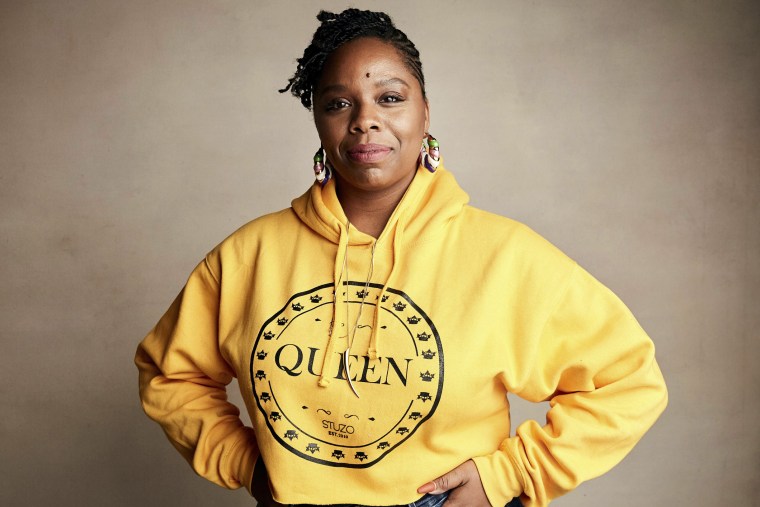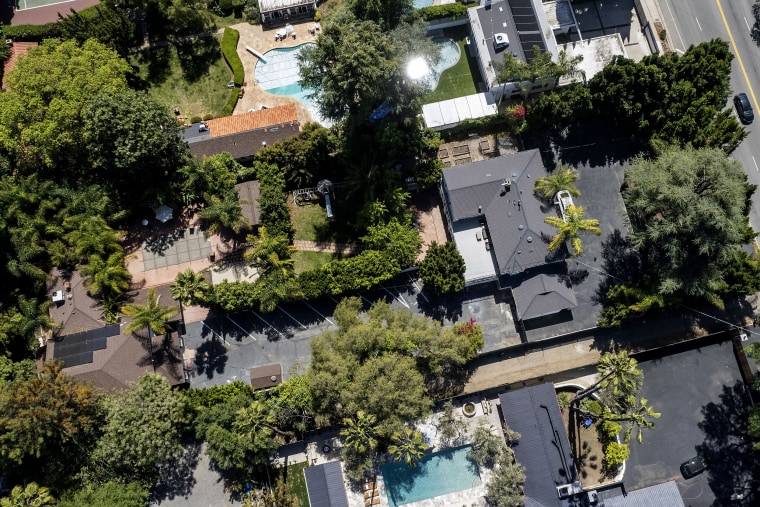When Kulia Petzoldt first learned of George Floyd’s death in 2020, she and her teenage daughter ventured to Lake Merritt in Oakland, California, to protest alongside a mass of people demanding justice.
Petzoldt, who is white, said growing up around different cultures and having friends who were Black made her feel more conscious of the racial discrimination Black people faced. The Black Lives Matter movement solidified that awareness.
“We can’t just do nothing,” Petzoldt, 42, said, “and particularly those of us who are sort of protected by society.”
Beyond protesting, Petzoldt and millions of others donated a cumulative $90 million in 2020 as people rallied behind eradicating racial inequality. She said she donated a few hundred dollars to the Black Lives Matter Global Network Foundation on various occasions, including a donation of $50 after reading that the foundation had purchased a $6 million mansion in Southern California, which was first reported by New York Magazine. To Petzoldt, the purchase was a sign of stability, she said.
“I think that it’s a great sign that in addition to the public movement that a lot of us saw, that Black Lives Matter is investing in the long- term communication and influence within our society,” she said, “which is much more likely to make change compared to protests.”
Petzoldt is one of many people across the country trying to make sense of what has become a controversial decision BLM leaders made in October 2020 when they bought property in Southern California using organization funds. New York Magazine’s report details the appearance of impropriety and how BLM leaders intended “to keep the house’s existence a secret.”
Patrisse Cullors, co-founder of the Black Lives Matter Global Foundation Network, and Melina Abdullah, co-founder of BLM Los Angeles, dismissed accusations of wrongdoing during a roundtable meeting the following week. They said the property is used as a safe haven from death threats and that they had intended to share the news of the purchase but were just waiting until it became safe to do so. That response and the purchase itself have elicited mixed reactions.

Why the mansion is controversial
Tiffinie Larkins works in accounting in Florida and said she’s never donated to the foundation but has supported the organization since it started. She’s against the purchase because it used organization funds; she said using personal salaries would have been the better option.
“I’m completely against that because that’s not what those donations were for,” Larkins said. Instead, she posited, why didn’t the organization invest in secure office space if leaders were worried about security?
During the roundtable, Cullors said that she and Abdullah used the residence as a safe haven, which interfered with their plans of announcing that the foundation had bought the mansion. “Conditions changed, and that’s it,” Cullors said.
Abdullah said she and her two daughters have stayed there on four occasions after her home was erroneously the target of police raids, a harassment tactic known as swatting. Since news of the mansion’s purchase was made public, Abdullah said she and her family have received 2,500 online threats and hateful messages — one from someone who Adbullah said physically attacked her in 2017. The alleged attacker sent her an article about the mansion, along with a profanity-laced message.

“The way that the articles are written makes it sound like people live in the home,” Abdullah said. “It spurs these kinds of acts of violence.”
Larkins said she is an adamant supporter of the organization and its goals, but disagrees with the acquisition because the optics look bad.
There “was so much controversy regarding Black Lives Matter — racists and people against it were saying it’s a scam and it’s all of this. It’s very unfortunate that it played right into that topic,” Larkins said.
Abdullah said that right-wing media have cast the purchase of the mansion as “unethical” or “unscrupulous.”
“I don’t donate, I think for that reason, to any cause,” Larkins said. “But I do believe that people should still support the organization. I think tighter controls need to be managed over the company to restrict that and then bring in someone new because I believe in the organization. and I think they need a new marketing strategy to kind of pivot away” from this controversy.
How nonprofits allocate donations
How nonprofits disperse donations is legally regulated according to standards aimed at protecting donors. “They have a right to expect the money to be used consistent with the appeal” for donations, said Lloyd Mayer, an expert on nonprofit groups and a law professor at the University of Notre Dame in Indiana, said.
He said the standards require putting donations toward whatever goals the nonprofit used to attract donors, whether the call was to support administrative costs or provide rent assistance. He said that legally, the mansion purchase was “consistent with Black Lives Matters purposes.”
“It’s a creative space for activists to highlight racial justice issues,” Mayer continued. “But most donors weren’t expecting money to go buy a really nice house in a nice neighborhood.”
To win in the court of public opinion, Mayer said BLM can release financial records without disclosing leaders’ personal information or posing a threat.
Mayer said releasing tax returns and audited financial statements is the industry standard BLM should follow.
“Despite the fact they received the tax status in late 2020, there is no financial information available to you besides the very basic numbers that don’t really tell you much,” Mayer said. “I’d just like to know whether the accounts that say they still have $60 million in the bank, somehow, are true? And if so, where is that $60 million and what are the plans for it?”
BLM chapter leaders say they feel the pinch
The national chapter released a report at the beginning of 2021, which said it raised $90 million in 2020 towards an annual budget that was $8.4 million. It dispersed $21.7 million to local chapters and 33 other organizations.
“We are left with an approximate balance of $60 million. Returning to fiscal sustainability, it is important that an organization not end its year at a balance of $0,” the report said as the only reference to how the excess money would be used.
Anthony Beckford, president and co-founder of Black Lives Matter’s Brooklyn, New York, chapter, said that his organization had never received funds from the national chapter.
He said funds that went to the foundation were not distributed to his chapter, despite being told by donors that they thought they were funding the Brooklyn arm.
“We need funding,” he said. “We need resources that the people need.”
These resources, according to Beckford, include more testing kits for Covid and other diseases that greatly affect the Black community, and access to transportation to give free rides to commuters.
Regarding the mansion, Beckford frowns upon it, because it “doesn’t benefit the people at all,” he said. He also said that purchasing the mansions can be problematic, because people think all BLM chapters are receiving millions of dollars, when that’s not the case.
Despite people’s skepticism of BLM, Beckford said that the mansion was not a reflection of the movement, which he tied to the people who lost loved ones to police brutality and seek justice.
“If you’re going to donate to the movement, realize that everybody you see marching out there, that’s the movement — the people, the organizations that you see out there who are grassroots — that’s the movement,” he said, “because they’re controlled by the people. They’re run by the people; and every effort they put forth is grassroots for the people.”


